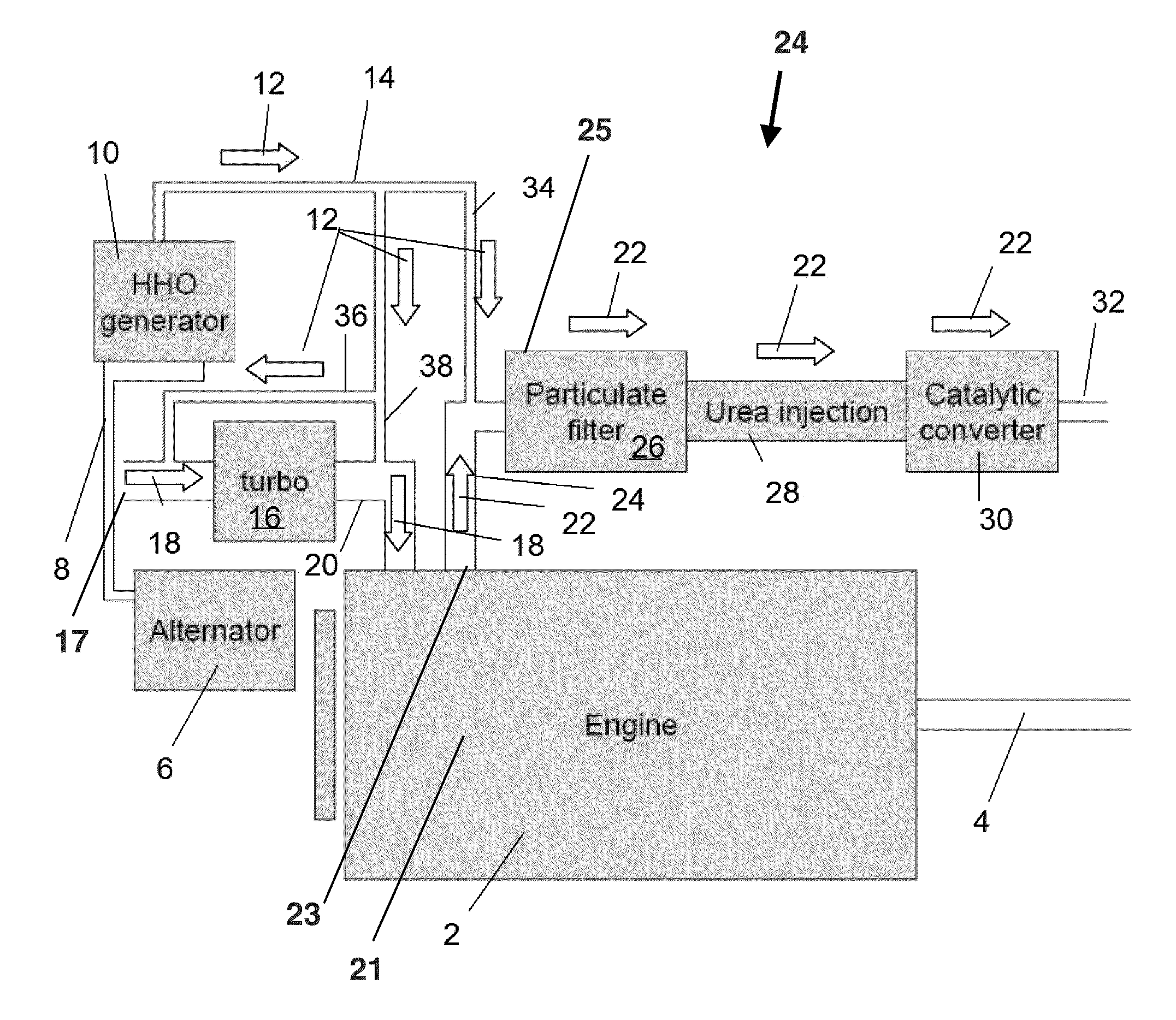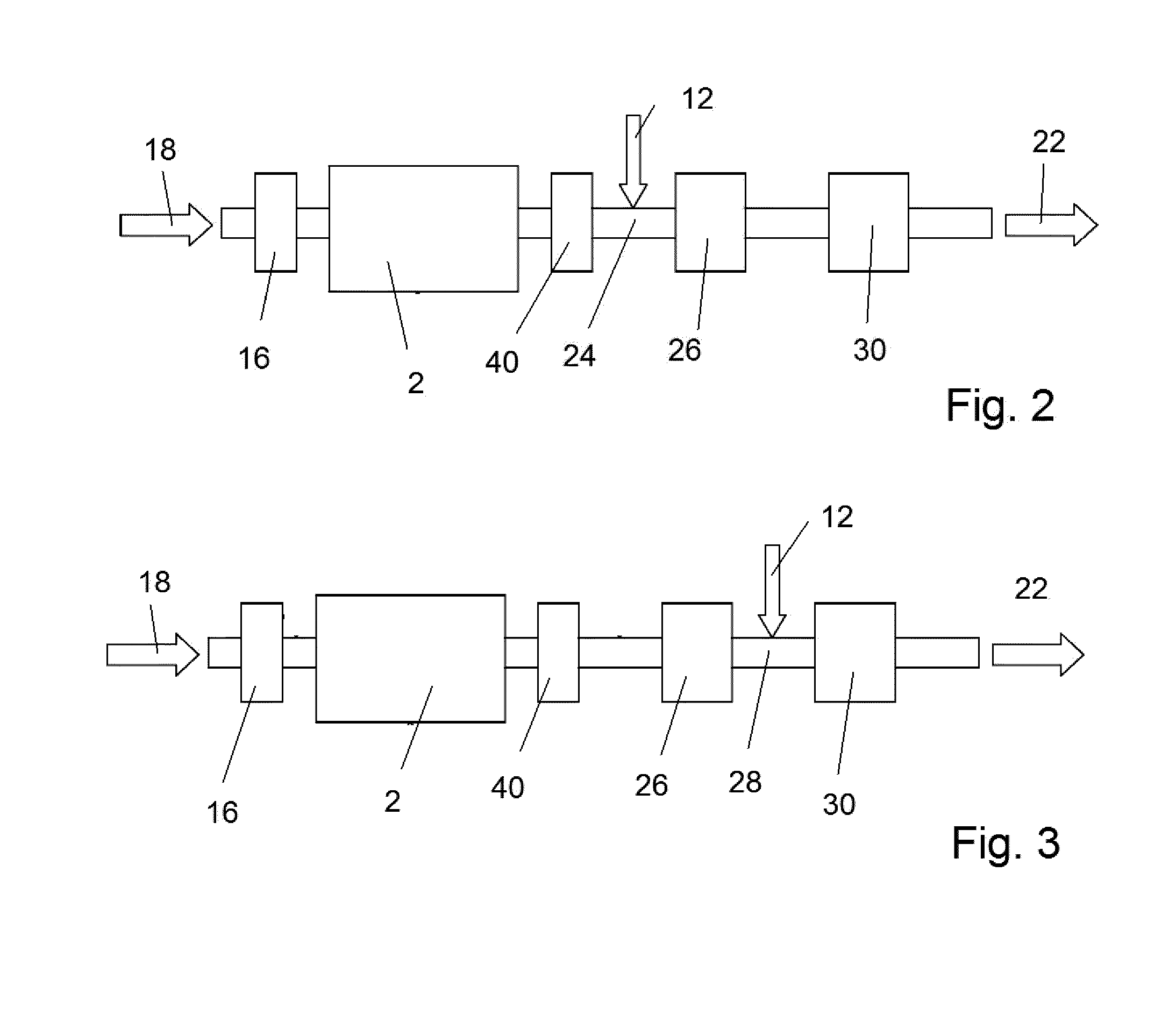Apparatus and Method for Preventing and Removing Carbon Deposits
a technology of apparatus and carbon, applied in mechanical apparatus, machines/engines, liquid cleaning, etc., can solve the problems of increasing the pressure drop of exhaust gases across the filter, the clogging of the filter pores, and the structure of the particulate filter, so as to prevent the increase of pressure drop across the filter, prevent efficiency losses, and increase the backpressure
- Summary
- Abstract
- Description
- Claims
- Application Information
AI Technical Summary
Benefits of technology
Problems solved by technology
Method used
Image
Examples
Embodiment Construction
[0044]FIG. 1 illustrates power producing apparatus, such as a reciprocating internal combustion engine 2 that may be a diesel engine 2, with HHO generation and different locations for HHO injection. The diesel engine 2 rotates an output 4 which may provide motive power for a motor vehicle or for any other application. The engine 2 also drives an alternator 6 that generates electrical power that travels through wires8 to HHO generator 10. HHO generator 10 generates HHO 12 as described in U.S. Pat. No. 8,852,410, ‘Electrolytic hydrogen generator and method’ issued to Luke J. Turgeon, et al. on Oct. 7, 2014. Piping 14 conveys the HHO 12.
[0045]The example engine 2 is illustrated as being equipped with a turbocharger compressor 16, but the invention also applies to non-turbocharged engines 2 and to supercharged engines 2. Intake air 18 on a low-pressure side of the turbocharger compressor 16 at an intake 17 of the diesel engine 2 is compressed by turbocharger compressor 16 and conveyed f...
PUM
 Login to View More
Login to View More Abstract
Description
Claims
Application Information
 Login to View More
Login to View More - R&D
- Intellectual Property
- Life Sciences
- Materials
- Tech Scout
- Unparalleled Data Quality
- Higher Quality Content
- 60% Fewer Hallucinations
Browse by: Latest US Patents, China's latest patents, Technical Efficacy Thesaurus, Application Domain, Technology Topic, Popular Technical Reports.
© 2025 PatSnap. All rights reserved.Legal|Privacy policy|Modern Slavery Act Transparency Statement|Sitemap|About US| Contact US: help@patsnap.com



